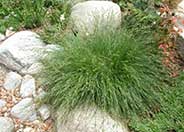
Common name:California Field Sedge
Botanical name:Carex praegracilis
This native Carex can be successfully used as a lawn substitute but requires significant water to obtain good coverage. Once coverage is reached, water can be reduced and maintenance is close to zero. Unmowed, the plant can be used effectively in a variety of conditions and will reach a height of 6" or under and spreads up to 2' by rhizomes.
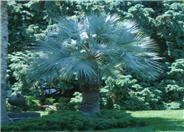
Common name:Mexican Blue or Blue Hesper Palm
Botanical name:Brahea armata
This native to Mexico and Baja California displays a dense canopy of stiff fronds contrasted by graceful inflorescences that arch downward and extend well beyond the foliage.

Common name:Yarrow
Botanical name:Achillea millefolium
This Achillea features spreading mats of fern-like rosettes, along with deeply divided leaves of a green or gray green color. In this form, the flowers are usually a white tone. Stems can reach 2'-3' above foliage. Yarrows propagate easily from rooted cuttings or division, which should be performed in the early spring or fall. Following bloom, one should dead head the plant and divide the clumps when it appears crowded.
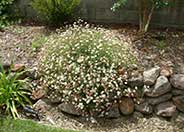
Common name:Santa Barbara Daisy, Mexican Daisy
Botanical name:Erigeron karvinskianus
This low mounding perennial, with fine leaves and white to pinkish, daisy-like flowers, is an excellent asset to rock gardens.
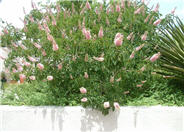
Common name:California Buckeye
Botanical name:Aesculus californica 'Canyon Pink'
This Aesculus selection is a tree with a year-round interest. Creamy pink or white flowers bloom in the spring, and when late summer arrives, these leaves drop to unveil pear-shaped fruits. Please note that these flowers are are poisonous. Buckeye has a decorative bark and branch structure. It slowly grows to 15' tall. It needs regular water for a few years and then will become drought tolerant.
poisonous. The characteristics of this tree are accented by a decorative bark and branch structure. It is commonly found on dry slopes and in canyons below 4000 ft. in woodland communities along the Coast Ranges and Sierra Nevada foothills. - CF
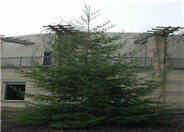
Common name:Coast Redwood
Botanical name:Sequoia sempervirens
This fast growing, aromatic tree has soft, dark green foliage with long needles appearing in flat sprays and brown, barrel-shaped cones that appear after 1 year. Its soft, red-brown bark is fiberous and furrowed. Particularly after mechanical damage, this tree will stump sprout to form new, young trees around the stump. Avoid planting in areas of high foot traffic.

Common name:Small Cape Rush
Botanical name:Chondropetalum tectorum
Chondropetalum tectorum has 3'-4' tall stems that shoot out in all directions from the roots. Each stem has papery bracts connected to the ends that turn from tan to dark drown, then fall off. Chondropetalum can grow in marshes, in the ground with regular watering, or in drought conditions.
Designer: Cornflower Farms
Photographer: GardenSoft
Incorporate compost 6" into your soil to retain water, reduce compaction, feed earthworms, and provide valuable nutrients to your plants.
Water-wise plants can be beautiful as well as practical.
Take your 'My List' Hydrozone Report to a landscape designer, or local nursery, when selecting and purchasing plants.
Attract, or buy beneficial insects such as ladybugs and lacewings to control pest outbreaks in your garden.